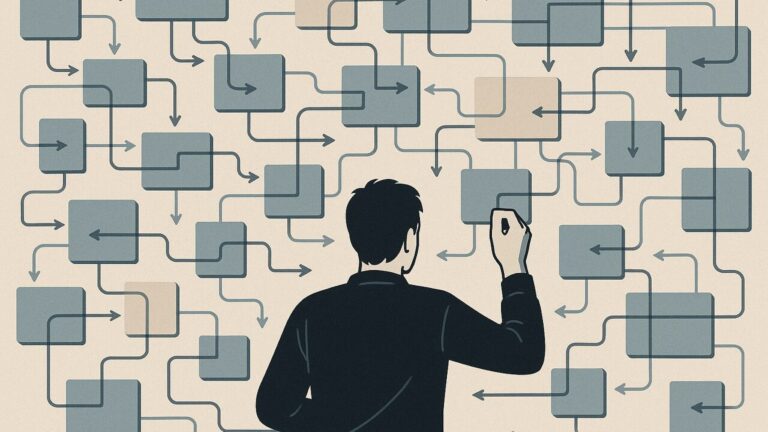Understanding the differences between AI agents, assistants, and other intelligent tools4 min read
Reading Time: 3 minutesThe terms AI agents, AI assistants, AI-powered tools, and AI tools are often used interchangeably, but they represent distinct roles within the world of artificial intelligence. While they all leverage advanced technologies like machine learning, natural language processing, and large language models, their purpose and applications differ quite a bit.
Levels of AI complexity
- AI tools: Ranging from simple rule-based systems to more advanced capabilities, generally requiring user direction and input.
- AI-powered tools: A lower level of AI compared to agents and assistants, used to enhance specific tasks with AI features, relying on user initiation.
- AI assistants: Moderate level of AI, providing user interaction, conversational abilities, and some learning to improve user experience.
- AI agents: Highest level of AI today, capable of autonomous decision-making, real-time adaptation, and minimal human intervention.
Let’s go deeper.
AI tools
AI tools refer to a broad category of software that incorporates AI to perform different tasks. These tools can be as simple as rule-based systems or as sophisticated as machine learning models that help solve complex problems. They aren’t typically autonomous like AI agents and are instead used to boost productivity or provide insights.
Key characteristics of AI tools include:
- Versatile applications: AI tools range from basic automation scripts to advanced analytics.
- User dependency: They need human input to define goals and parameters.
- Examples: ChatGPT for content creation, Tableau for AI-powered data visualization, and Zapier for workflow automation.
AI-powered tools
AI-powered tools are software applications that use AI to improve their capabilities. They need users to interact with them, and they help assist with specific tasks, automating processes to save time or make things easier. Unlike AI agents, AI-powered tools don’t act on their own.
Key characteristics of AI-powered tools include:
- Human-initiated: They require users to start a process or provide input.
- Task-specific enhancement: AI is used to boost performance for specific tasks like data analysis or image recognition.
- Examples: Github Copilot (for coding assistance), Grammarly (for writing assistance), Adobe Photoshop’s AI features, and Excel’s AI-powered data analysis.
AI assistants
AI assistants are more user-focused and are designed to help users with routine tasks to make life easier. Popular examples like Siri, Alexa, and Google Assistant perform tasks like setting reminders, answering questions, and controlling smart devices. They provide personalized, conversational interactions through voice or text and many of them are undergoing the transition to “AI powered” as previously most of them were ML based.
Key characteristics of AI assistants include:
- User interaction: They engage directly with users using conversational interfaces.
- Task assistance: They handle routine tasks like managing calendars and answering questions.
- Limited learning: AI assistants learn in a limited way, mainly to make user interactions better.
AI agents
AI agents are intelligent systems that perform tasks autonomously and, if needed, they can employ non AI functionality or other Agents to accomplish their tasks. There are not many instances of AI Agents out in the wild yet, but Google showed examples of Agents setting appointments for you, and Anthropic allows their desktop app to control your computer and perform tasks on your behalf.
The future will include agents that are capable of speech, access to APIs and your credentials and access to other agents they can delegate to various tasks.
Key characteristics of AI agents include:
- Autonomous decision-making: They can make complex decisions using large datasets.
- Adaptability: AI agents learn from new situations and can adapt their decision-making over time.
- Minimal user interaction: They typically operate in the background, focusing on long term goals that can be broken down in to discrete actions.
Comparing AI agents, AI assistants, AI-powered tools, and AI tools
| Aspect | AI tools | AI-powered tools | AI assistants | AI agents |
|---|---|---|---|---|
| Primary function | Provide AI-enhanced solutions for various tasks. | Enhance user capabilities with AI features. | Assist users with routine tasks and information retrieval. | Perform autonomous decision-making and complex tasks. |
| Interaction | Require user-defined goals and input. | Require user initiation to function. | Direct interaction with users via voice or text. | Operate in the background with little user interaction. |
| Learning capability | Varies depending on the tool. | Typically do not learn autonomously. | Limited learning aimed at improving user experience. | Can learn and adapt to new situations. |
| Examples | ChatGPT, Tableau | Grammarly, Zapier, Adobe Photoshop AI features, | Siri, Alexa, Google Assistant, Microsoft Cortana, Tabnine, Frontier by Anima | Tesla Autopilot, IBM Watson, OpenAI Five |
Applications and focus
AI agents are typically used in specialized environments where complex data requires sophisticated decision-making. AI assistants are more common in consumer settings to enhance convenience. AI-powered tools and AI tools are great for improving productivity with specific tasks. Understanding these differences helps businesses and individuals choose the right AI technology for their needs—whether it’s automating complex processes or enhancing day-to-day interactions.
AI agents are autonomous systems for specialized tasks, usually working in the background to make decisions. AI assistants are user-facing, designed to make daily life easier by handling routine tasks. AI-powered tools use AI to boost specific features and require user input, while AI tools are a broad category of AI-enhanced software for various applications. As AI advances, all these types will play important roles in transforming how we interact with technology and automating our lives.

 Figma
Figma Adobe XD
Adobe XD Blog
Blog

